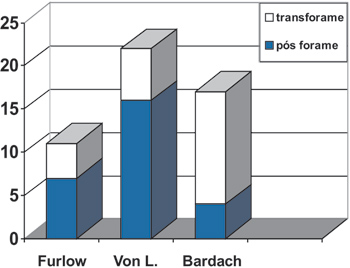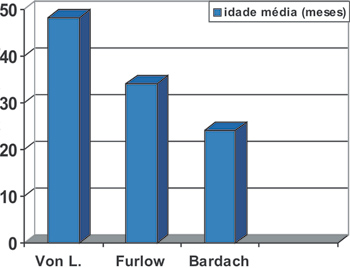ABSTRACT
Objective: The study endpoint was to analyze the occurrence of fistulas and dehiscences after primary palatoplasty performed in patients of the Instituto de Cirurgia Plástica Santa Cruz (ICPSC). Methods: Fifty-five patients underwent to this procedure between 1998 and 2005 were retrospectively observed. Results: The Von Langenbeck technique was performed in 22 (43.1%) cases, being the average age of 48 months, followed for the technique of Bardach in 15 (29.5%) cases, with average age of 24 months, Furlow technique in 11 (21.6%) cases, with average age of 34 months. The Von Langenbeck technique was the most used in the incomplete palate clefts (59.2%). Bardach technique was the most used in the complete labiopalatal cleft (54.1%). There were observed fistulas in the technique of Von Langenbeck, Furlow and Bardach, respectively, in 22.7%, 18.2% and 39.9%. The incidence of dehiscences in the techniques of Von Langenbeck, Furlow and Bardack was 13.5%, 9.1%, and 13.3% respectively. Conclusion: Thus, it had a correlation of the incidence of fistulas with the used technique having been observed bigger incidence in the Bardach technique, precocious age at time of time of surgery and complete labiopalatal cleft.
Keywords: Oral surgical procedures/methods. Palate/surgery. Cleft palate/surgery. Cleft palate/complications. Fistula. Surgical wound dehiscence.













